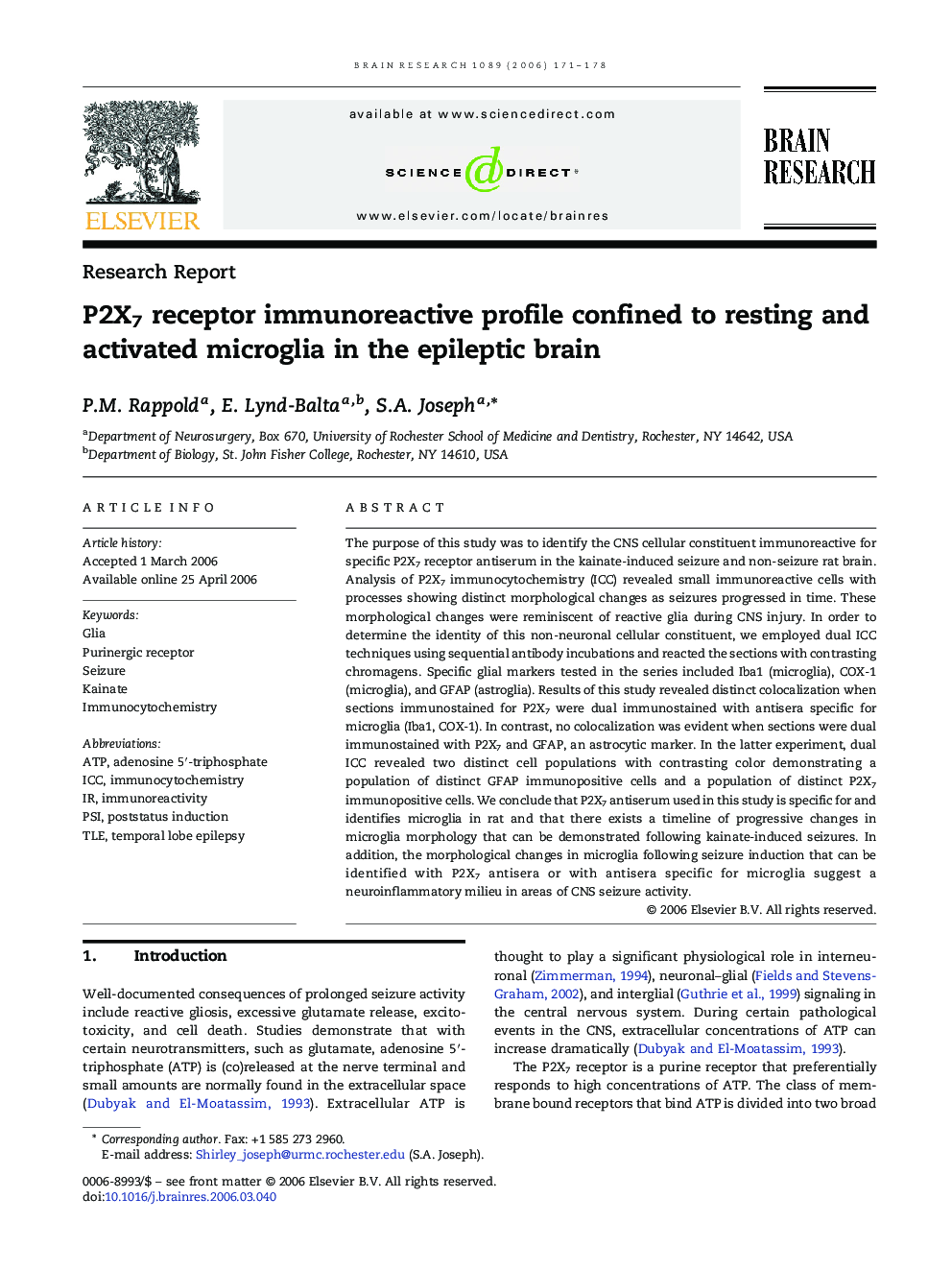| Article ID | Journal | Published Year | Pages | File Type |
|---|---|---|---|---|
| 4332967 | Brain Research | 2006 | 8 Pages |
The purpose of this study was to identify the CNS cellular constituent immunoreactive for specific P2X7 receptor antiserum in the kainate-induced seizure and non-seizure rat brain. Analysis of P2X7 immunocytochemistry (ICC) revealed small immunoreactive cells with processes showing distinct morphological changes as seizures progressed in time. These morphological changes were reminiscent of reactive glia during CNS injury. In order to determine the identity of this non-neuronal cellular constituent, we employed dual ICC techniques using sequential antibody incubations and reacted the sections with contrasting chromagens. Specific glial markers tested in the series included Iba1 (microglia), COX-1 (microglia), and GFAP (astroglia). Results of this study revealed distinct colocalization when sections immunostained for P2X7 were dual immunostained with antisera specific for microglia (Iba1, COX-1). In contrast, no colocalization was evident when sections were dual immunostained with P2X7 and GFAP, an astrocytic marker. In the latter experiment, dual ICC revealed two distinct cell populations with contrasting color demonstrating a population of distinct GFAP immunopositive cells and a population of distinct P2X7 immunopositive cells. We conclude that P2X7 antiserum used in this study is specific for and identifies microglia in rat and that there exists a timeline of progressive changes in microglia morphology that can be demonstrated following kainate-induced seizures. In addition, the morphological changes in microglia following seizure induction that can be identified with P2X7 antisera or with antisera specific for microglia suggest a neuroinflammatory milieu in areas of CNS seizure activity.
